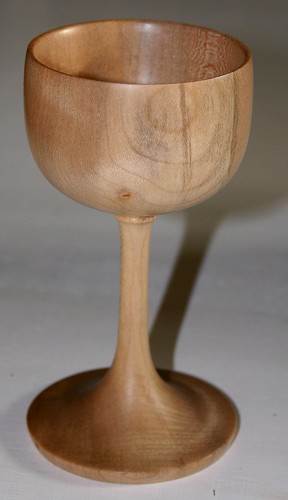ro
Established Member
I've been working through "Woodturning: a foundation course" and done lots of practising on softwood so, I thought it was time to try actually making something out of hardwood.
My first attempt at something that wasn't a cylinder of pine is this goblet made out of Sycamore:

The outside turned nicely and didn't need too much sanding, but the inside was a bit of a state and needed a lot of work with 60 grit to smooth out the tear out, maybe I need to get better at sharpening my spindle gouge (or make a round nose scraper).
Then I thought I'd try my hand at a bit of bowl turning. I found a random offcut of something (I don't know what it is) and took a trip to John Davis woodturning to get a bowl gouge. While there I saw some potpourri bowl lids and thought that this would give me a great excuse to make a bowl with nice, thick walls

Both the inside and outside required a fair bit of sanding to reduce tearout. But, overall I'm quite happy with the result.
Next project is an 8" thinner walled bowl in spalted beech.
My first attempt at something that wasn't a cylinder of pine is this goblet made out of Sycamore:

The outside turned nicely and didn't need too much sanding, but the inside was a bit of a state and needed a lot of work with 60 grit to smooth out the tear out, maybe I need to get better at sharpening my spindle gouge (or make a round nose scraper).
Then I thought I'd try my hand at a bit of bowl turning. I found a random offcut of something (I don't know what it is) and took a trip to John Davis woodturning to get a bowl gouge. While there I saw some potpourri bowl lids and thought that this would give me a great excuse to make a bowl with nice, thick walls

Both the inside and outside required a fair bit of sanding to reduce tearout. But, overall I'm quite happy with the result.
Next project is an 8" thinner walled bowl in spalted beech.




